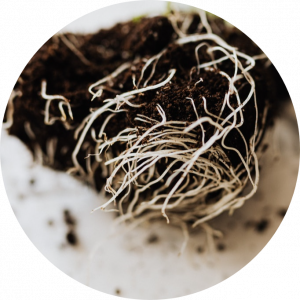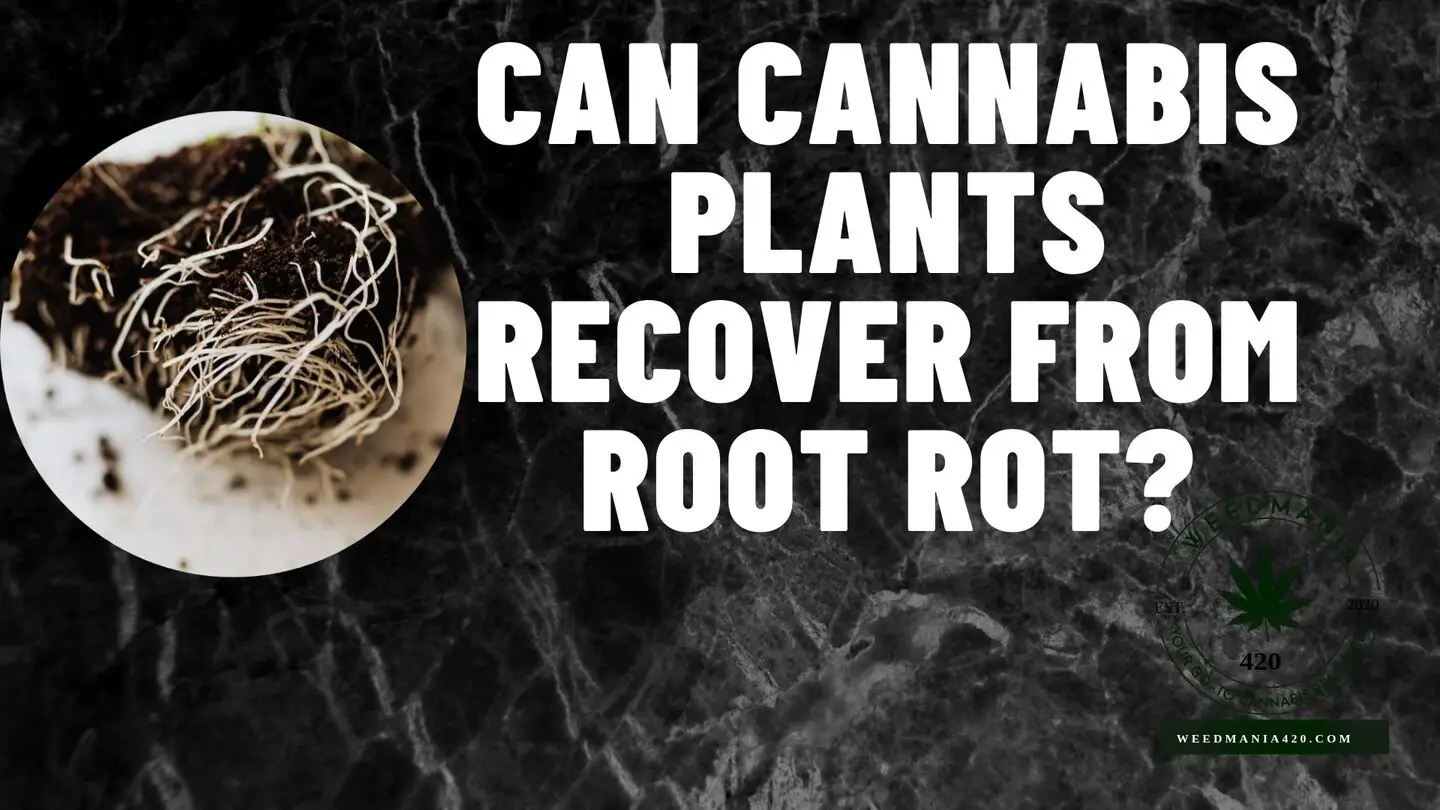Growing weed is quite enjoyable once you’ve mastered it. But as a beginner, you’ll encounter problems no one prepared you for. And some of these eventualities might kill your plants. Root rot is one such disaster, if it eats into your plant so much, it inhibits the absorption of nutrients from the ground, starving your plants.
Besides denying your plant the essential nutrients, the plant also has to expend part of its energy to healing. Thus, slowing the plant’s growth and bud development. You don’t want to deal with root rot, but if it happens, is there a chance?
Table of Contents
Can Cannabis Plants Recover from Root Rot?
Plants that get infected with root rot can be treated and nursed back to health. But it depends on many factors, like the cause of the root rot, resilience of the strain, and the degree of rot. Some plants never recover from root rot.
What Is Root Rot?
Causes of Root Rot
Root rot starts to develop under a set of specific conditions. You must therefore keep a keen eye on your plants for signs of poor health, and act fast.
Overwatering
Overwatering your plant gives it more than the roots can take, creating a soggy environment which fosters the growth of harmful microorganisms.
The degree of hurt will depend on your grow medium— mediums that hold more water for long, like soil— are more prone to root rot.
Prolonged exposure to overwatered conditions can cause some of the roots to die due to lack of oxygen. As they die and decay, the rot can spread to healthier roots and kill them even when the overwatering problem is solved.
Temperature
Temperature also plays a massive role in the development of root rot. Most microorganisms flourish in temperatures between 20 and 34 degrees Celsius. For weed grown in hydroponic systems, heat in the reservoir can result in the bloom of fungi, bacteria, and algae, putting the plant at risk of developing root rot.
Lighting Problems
Light leaks within the hydroponic system encourage root rot by giving rise to unwanted populations of microorganisms such as algae and fungi. These parasites microorganism will use up the oxygen in the water, causing root rot.
Inadequate Oxygen
For whatever reason your grow medium lacks oxygen, it isn’t a good grow environment anymore. Oxygen is essential for the plant and when the roots are starved of it, they begin to rot.
Lack of oxygen in the roots results in the suffocation of roots causing them to die and rot. Besides, roots sitting in deoxygenated stagnant water creates a breeding ground for microorganisms that can cause root rot.
Organic Nutrients
Additional organic matter in the hydroponic reservoir, if not removed, can decay, creating an enabling environment for harmful microorganisms. Think of the many dead things in a swamp, organic nutrients, attract a lot of bacteria when they decompose, including the root-rot-causing microorganisms.
Signs of Root Rot in Cannabis Plants

Root rot can cause a range of symptoms because a faulty root system causes the plant to start shutting down. In most cases, root rot symptoms resemble that of a weed plant that has been overwatered or underwatered. It manifests in many ways, with the symptoms occurring in various parts of the plant’s anatomy. These signs include;
- The plants wilt or droop overnight like they would when overwatered.
- The leaves turn yellow or white or start falling off quickly.
- The tips of young roots turn brown early on.
- Low absorption of water by the plant
- Nutrient deficiencies since the plant cannot effectively absorb nutrients through the roots.
Ways To Reverse Root Rot In Marijuana
Correcting root rot from one or many sources can be achieved through both treatment and a regular cleaning and maintenance routine. Not all damage will, however, be repaired. Roots will regrow, but you should remove almost dead or weak roots, wilted stalks, buds, and leaves that are beyond repair. There are several root rot causes and their specific solutions, but the two main approaches for fighting root rot are;
- Treating and protecting the roots with an agent-specific for killing root rot.
- Changing the grow medium and taking the plant into a new, uninfected soil.
If the root rot has killed most roots, the plant might not recover from the rot. Still, try the using root rot agents when the plant needs faster relief.
How to Prevent Root Rot
As much as root rot can be reversed if noticed early, it should be prevented at all costs to ensure the plant grows healthy throughout since the plant might not yield well after expending its energy on healing. Root rot can be prevented in many ways.
Keep the Grow Room Clean
The growing area should be kept as clean as possible to discourage the growth of harmful microorganisms. Before growing, all grow-related items must be disinfected to kill all bacterial and fungal spores that may cause root rot.
Add Beneficial Root Bacteria
Beneficial bacteria helps to break nutrients in the roots, enhancing absorption and photosynthetic processes. The plant gets more nutrients, grows faster, loses a lot of water through the leaves, thus less dampness at the roots.
Bacteria such as Bacillus and Pseudomonas form a symbiotic relationship with the plant and insulate them from damage and enable better nutrient absorption.
Ensure Proper Drainage and Aeration.
For soil growers, adding an aerating aggregate to the soil can trap oxygen for roots to use, thus avoiding root rot. It is highly beneficial for hydroponic growers to dissolve as much oxygen into the water as possible to allow proper oxygenation of the weed plants’ roots.
Eliminate Light Leaks to the Roots
Light provides a conducive environment for the growth of microorganisms. Eliminate this by using black light-proof tubes even when feeding your plant roots with oxygen.
Maintain Low Temperatures
Warm water tends to hold less dissolved oxygen and provides a perfect environment for microorganisms’ growth than cold water. Try to maintain temperatures around 18 to 20 degrees Celsius, optimal for both plant growth and root rot prevention.
In Conclusion
Your plant can recover from root rot if you notice the invasion early enough. Pay attention to the plant for any signs of root rot. Take care of the plant and be on the lookout for invasive pests, the onset of diseases, and signs of deficiencies. You don’t want root rot to flourish under your nose.

